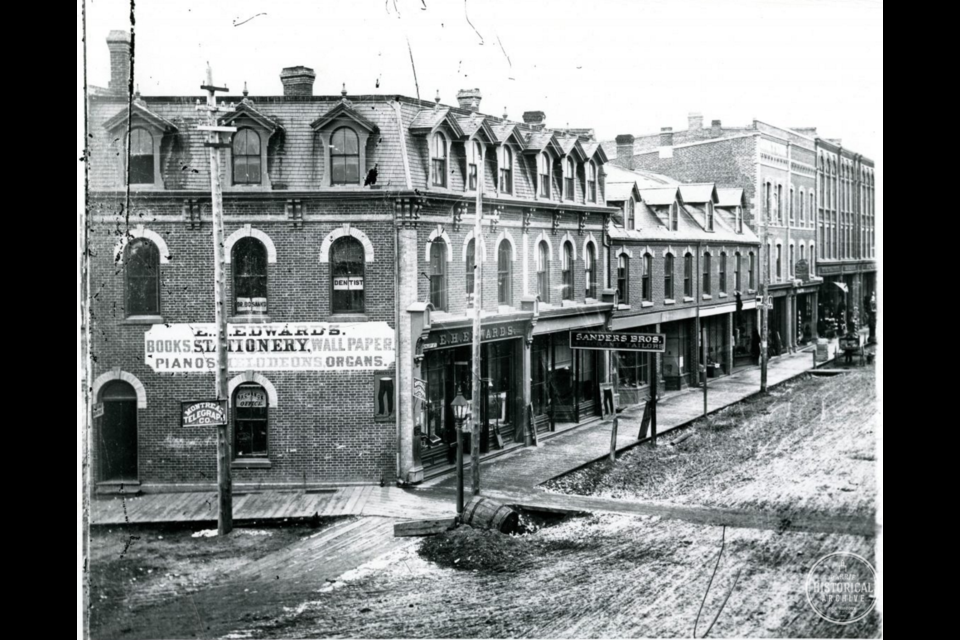“Office and residence No. 68 Mulcaster St. Pay no attention to rumors that he has retired. You will find him very much alive to the public requirements. Call or phone No. 263 when you need prompt and efficient service.”
This ad ran often in the ‘Barrie Examiner’ in the early 1920s, even up until 1924, one year before Dr. Charles Henry Bosanko passed away at the age of 82 years old. It may be true that local folks had assumed that the dentist had given up his practice, or rather they were no longer very inclined to open their mouths for a practitioner who had learned his trade back in the 1870s.
The somewhat Eastern European sounding name, Bosanko, is actually English and unique to the Cornwall region, where Charles’ parents came from. The family settled in York Region and Charles was born there in 1842.
The first school of its kind, The Royal Dental College opened in Toronto in 1869 and Charles Bosanko was among the first students to attend and graduate. The next order of business was to find an internship and his quest led him to the practice of Dr. J. McCausland who operated out of an office on Dunlop St. in Barrie.
It was here that he met his bride, Elizabeth Isabella Laird, an Irish girl and local school teacher. They married in late 1871, and according to her 1925 obituary in the ‘Barrie Examiner’, “Her wedding to Dr. Bosanko was the first solemnized in the present Collier St. Methodist Church.”
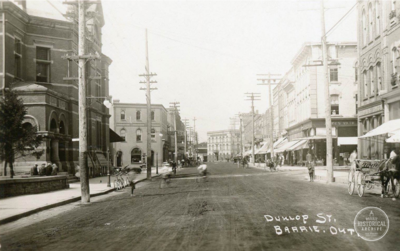 Looking west on Dunlop St. E, with the Post Office on the left, and Bosanko's former place of business, next to it, circa 1910. Photo courtesy of the Barrie Historical Archive.
Looking west on Dunlop St. E, with the Post Office on the left, and Bosanko's former place of business, next to it, circa 1910. Photo courtesy of the Barrie Historical Archive. Charles returned to school in 1873 and earned a post graduate degree at the Philadelphia Royal Dental College. By 1874, he had earned his D.D.S., and taken over Dr. McCausland’s practice. Now the sign in the upper window overlooking the Post Office Square said ‘Dr. Bosanko’.
Although educated in the most modern methods of the time, I would not like to spend any time in a Dr. Bosanko’s nineteenth century dental chair.
Likely, his chair would be made of ornate cast iron, upholstered in red velvet or black leather, and raised or lowered by a ratchet system. Dr. Bosanko, like most dentists, would have worked on his patients while standing. Lucky for him, foot pedal operated drills, much like sewing machines, had just been invented as he started out in his practice. Hand drilling could not have been fun for him or his customers.
Dr. Bosanko would have filled dental cavities with gold, silver, mixed metals or vulcanized rubber. He could create a set of porcelain teeth for you too, if you wanted, which was much preferable to what were known as Waterloo teeth.
Before more durable dental porcelain was perfected, the best and strongest dentures were made from dead men’s teeth. On battlegrounds, like where the Battle of Waterloo was fought, the teeth of young, strong but dead soldiers were extracted and collected in the thousands to make false teeth. The practice of using the teeth of the deceased only faded away completely with the turn of the 20th century.
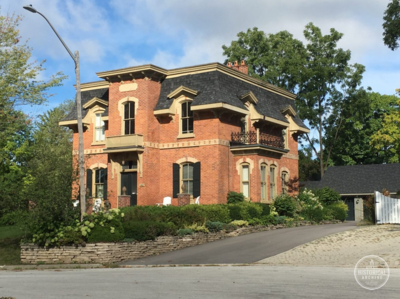 Beverly Hall at 142 Collingwood St. 2016. Photo courtesy of the Barrie Historical Archive.
Beverly Hall at 142 Collingwood St. 2016. Photo courtesy of the Barrie Historical Archive. Dr. Bosanko did well for himself in Barrie. In 1879, he had a most beautiful house built for himself in the east end of town. Still standing today is a Second Empire style mansion perched on a hill at 142 Collingwood St. He called it Beverly Hall. Huge and roomy, with a fantastic view of Kempenfelt Bay, it was too big for the family and too far from the dentist’s downtown practice.
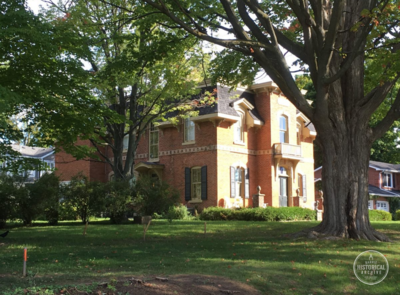 Another view of Dr. Bosanko's home, Beverly Hall. 2016. Photo courtesy of the Barrie Historical Archive.
Another view of Dr. Bosanko's home, Beverly Hall. 2016. Photo courtesy of the Barrie Historical Archive. The Bosanko family moved to a far more modest home at the corner of Worsley and Mulcaster Sts. and Dr. Bosanko operated his dentistry out of his home after that – no more commuting.
Both born in 1842, within three months of each other, Dr. and Mrs. Bosanko both died in 1925, again within three months of each other. They are buried in the Laird plot in Barrie Union Cemetery.
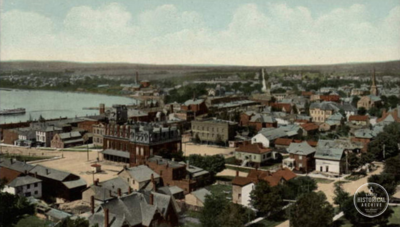 Colourized postcard showing 68 Mulcaster St. up the street from the Market Building, circa 1885. Photo courtesy of the Barrie Historical Archive.
Colourized postcard showing 68 Mulcaster St. up the street from the Market Building, circa 1885. Photo courtesy of the Barrie Historical Archive. On October 23, 1925, auctioneer W.A. McConkey oversaw the sale of the Bosanko estate and belongings at 68 Mulcaster St. It was purchased by the owners of a novelty shop on Elizabeth St. They moved their business, called The Wayside Gift Shop, up to Mulcaster St. and rebranded it as the Tobey Jug, a tea room and store. Today, 68 Mulcaster St. still stands, and hardly looks its age of well over 100 years.
Each week, the Barrie Historical Archive provides BarrieToday readers with a glimpse of the city’s past. This unique column features photos and stories from years gone by and is sure to appeal to the historian in each of us.
